Kiss and Tell, 2023
MUDIMA Foundation, Milan, Italy
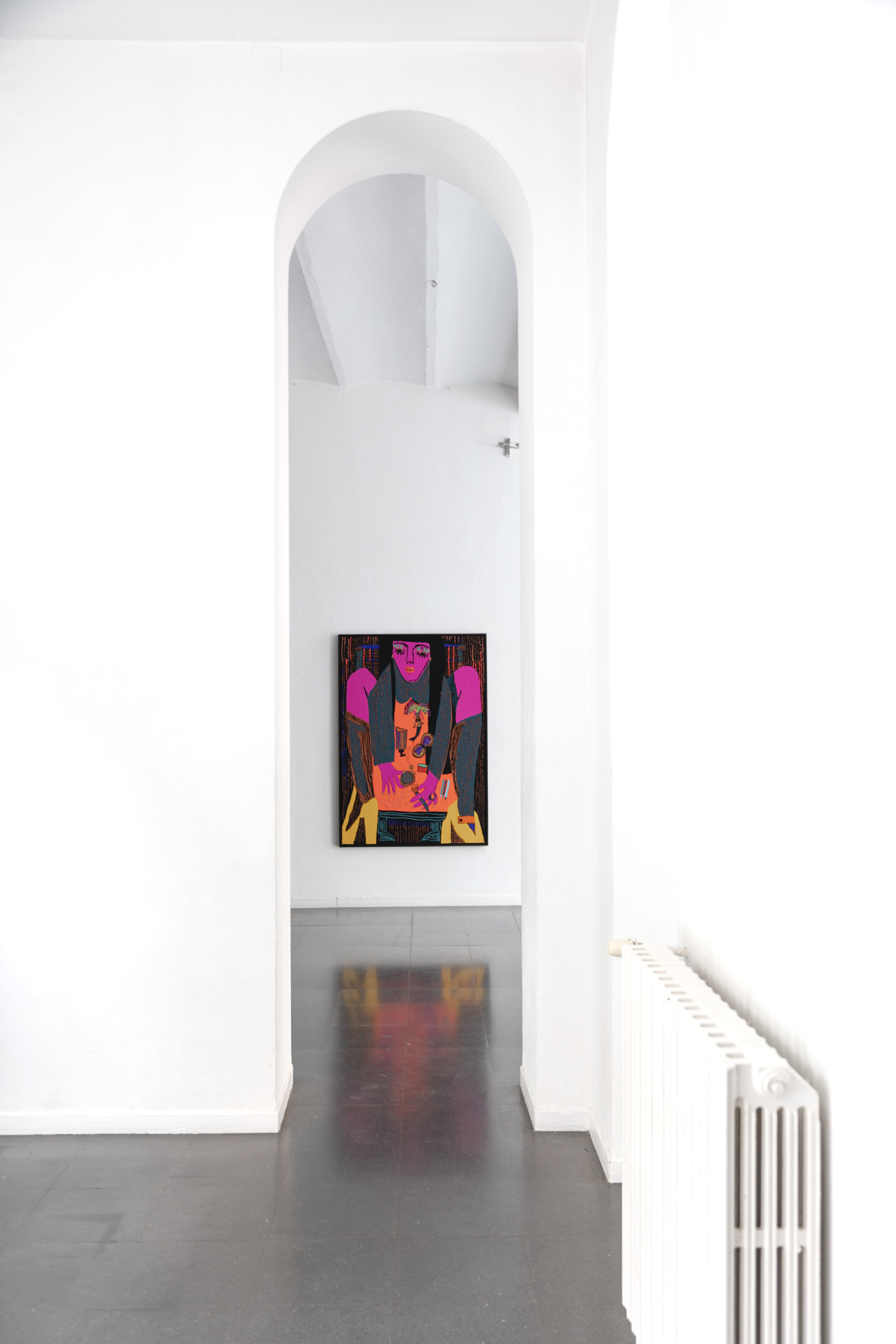
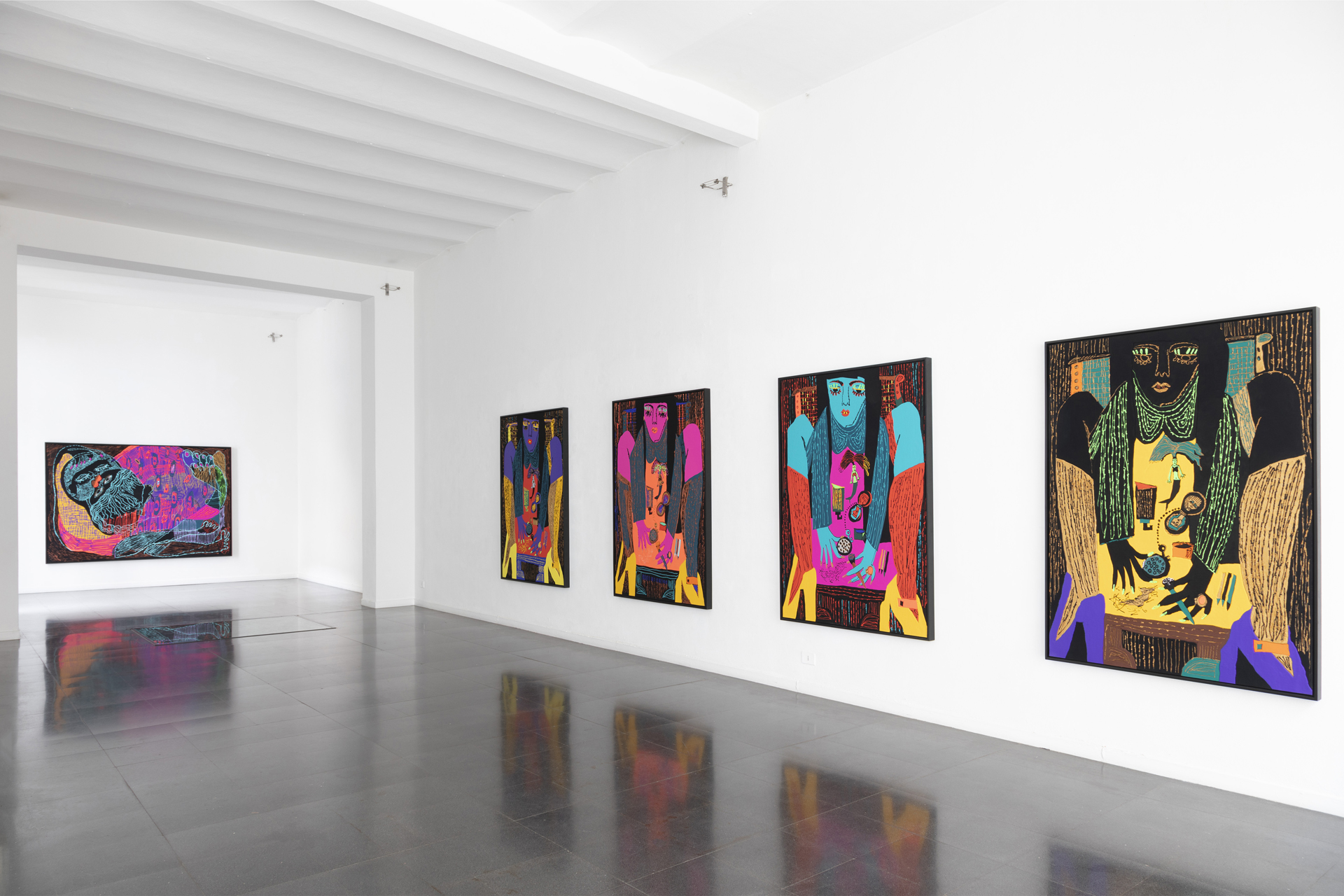

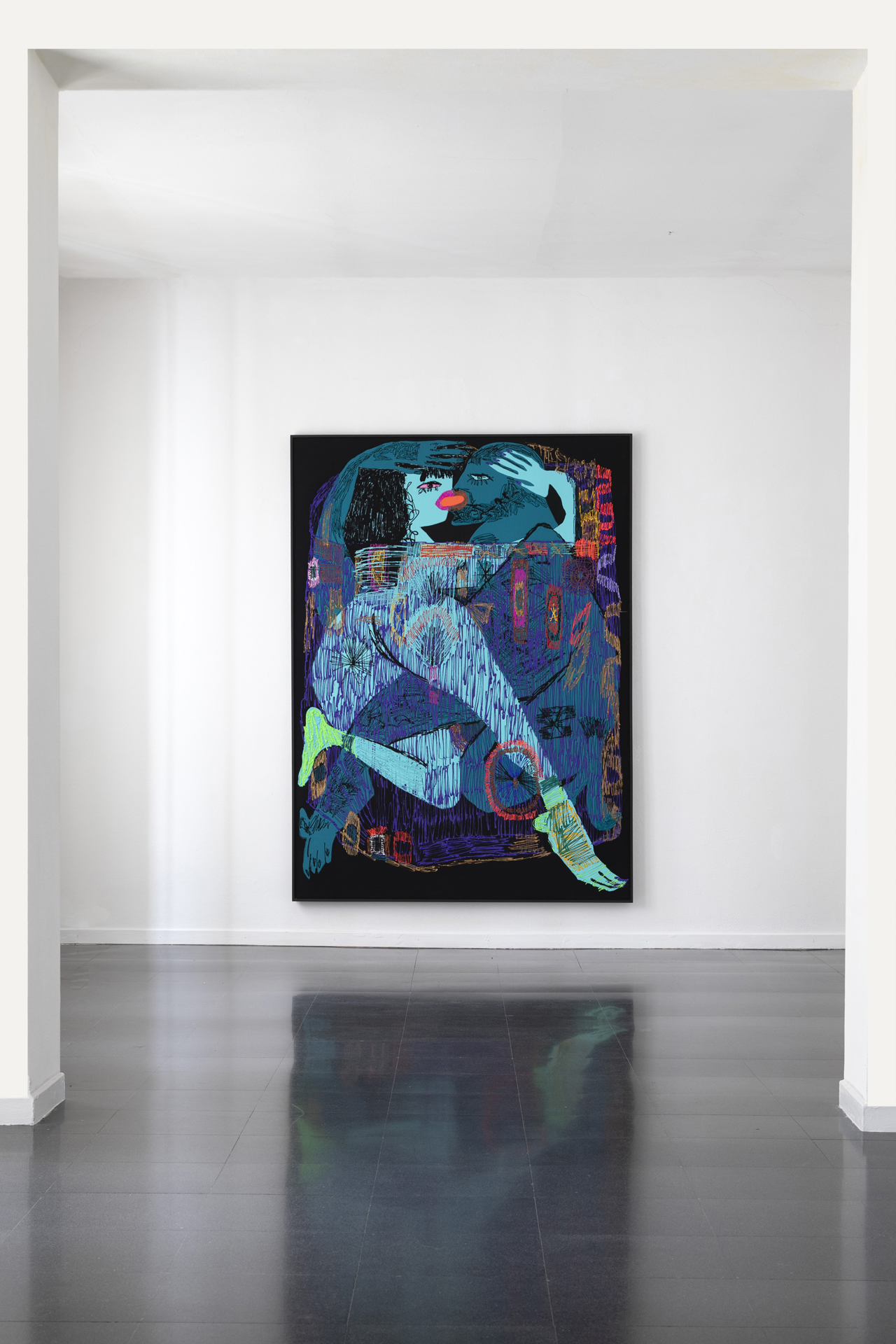
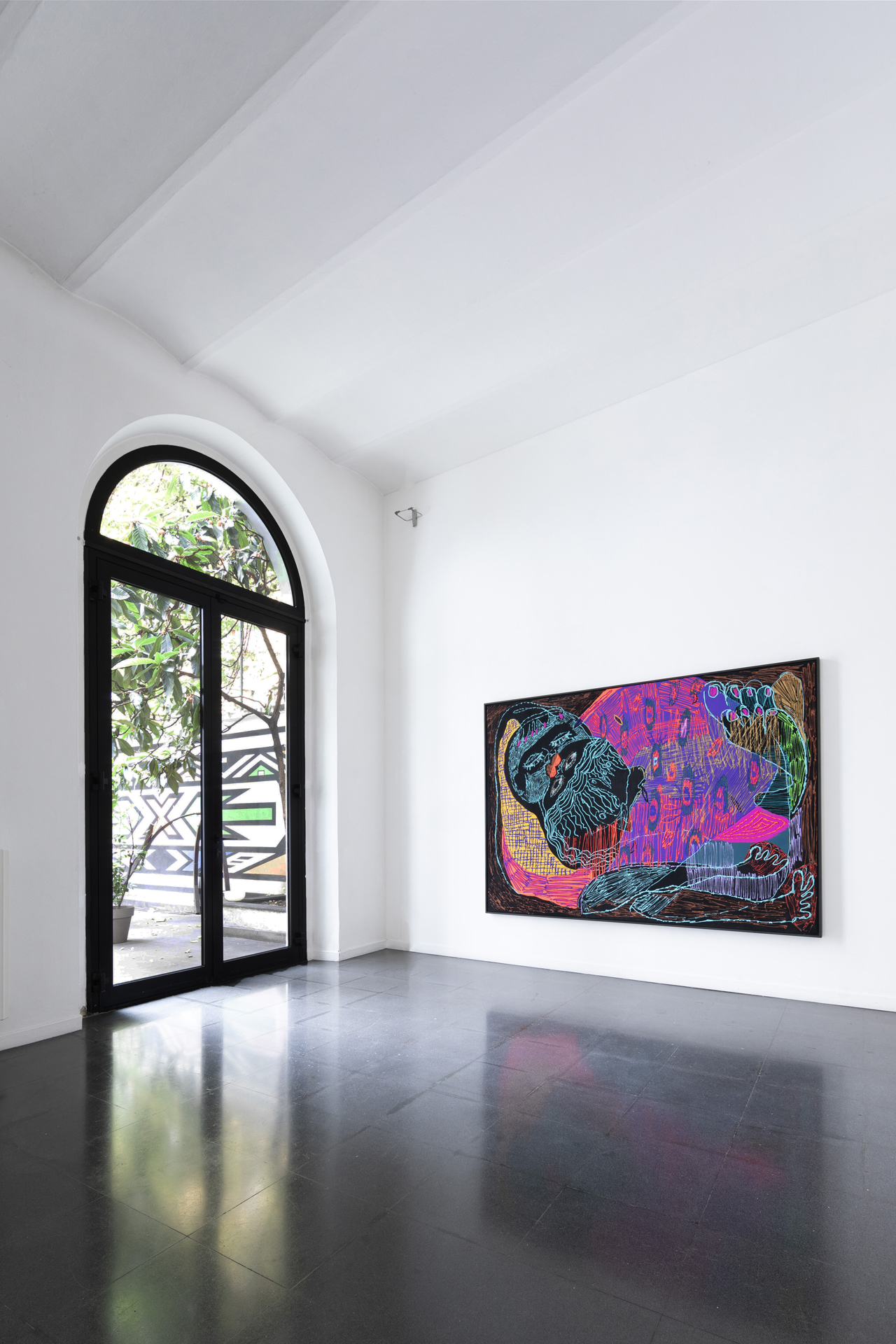
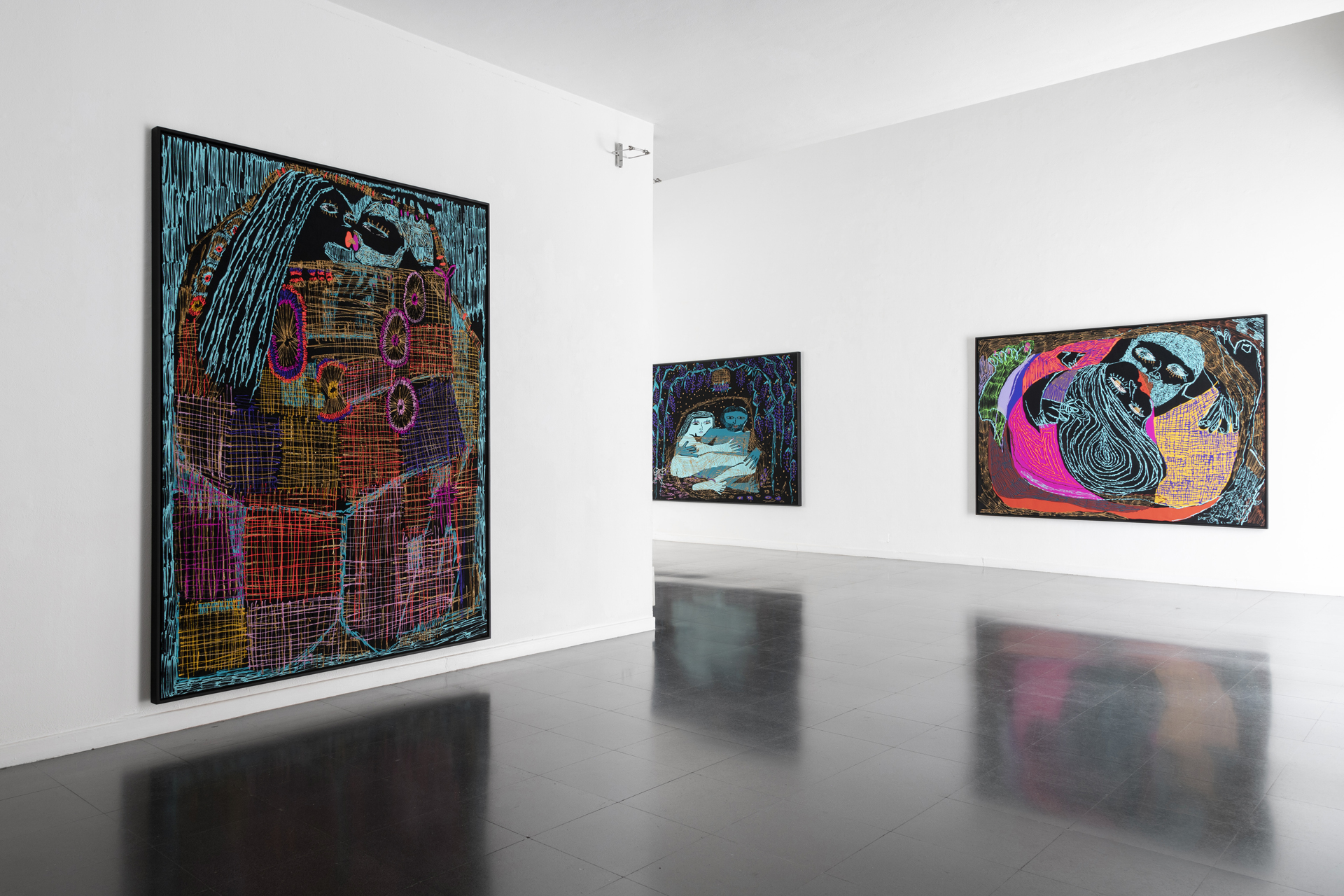
Link to Exhibition
Photographs by Fabio Mantegna
Summer Wheat’s (American, born 1977) Kiss and Tell at Fondazione Mudima in Milan, features a series of new works furthering Wheat’s exploration of mirroring and themes of vanity, visibility, and love.
Wheat’s practice is informed by drawing—where line as a foundational element allows for layers of high-key color to activate the space. Using her unique method of pushing medium through the back and onto the front of screen surfaces—positioned somewhere between painting and textile—she depicts intertwined bodies and a smattering of everyday objects that reform histories depictions of women. In her practice, Wheat is influenced by both ontological and art historical forerunners, citing Leonardo da Vinci (Italian, 1452–1519), Rembrandt (Dutch, 1606–1669), Edgar Degas (French, 1834–1917), and Andy Warhol (American, 1928–1987), and concepts connected to intimate, universal, and cosmic space, mirroring, nature, and love. Wheat’s contained worlds foreground female figures and signal the artist’s broader aim to refocus histories lens.
The reflection in Wheat’s new work is less about a one-to-one mirroring and more akin to art historian Cristina Albu’s description in her 2016 book Mirror Affect: Seeing Self, Observing Others in Contemporary Art, where she eloquently describes mirroring in art in the latter part of the twentieth century as cultivating “asymmetrical relations between reflection and visual representation, self and others, personally assumed roles and more or less imposed social roles.”1 Wheat’s commitment to activating forms and methods of reflection joins the kind of direct mirroring associated with the theme of water present in her 2020 exhibition Blood, Sweat, and Tears (labor, self-reflection, nourishment) at Kemper Museum of Contemporary Art in Kansas City, Missouri. Reflective elements in this new series are additionally attuned to dismantling historic social constructs surrounding gender representation in art. The electrified lines in Wheat’s work trace this labyrinth of female representation in the lineage of art history— a vibrating timeline with undulating curves and a pulsing electric palette replacing a straight, monochromatic, symmetrical narrative.
....
Part of the essay by Erin Dziedzic included in the exhibition catalog.